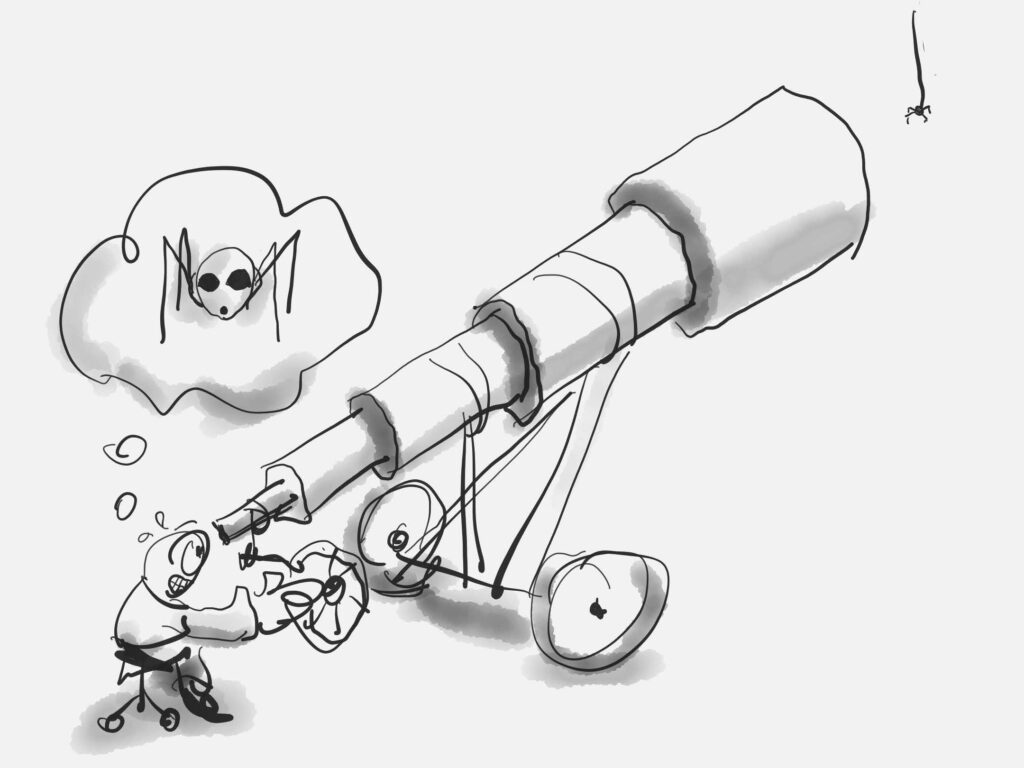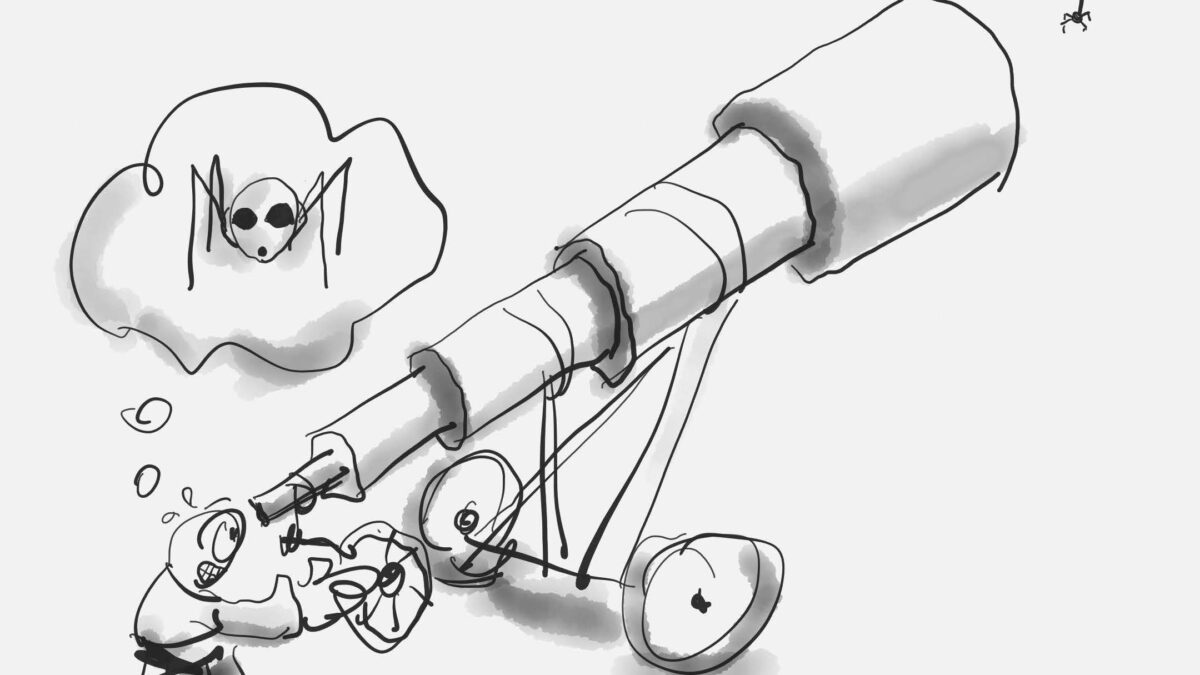
When it was announced that one of the fabulous images taken by the James Webb telescope was, in fact, an image of a slice of chorizo taken by a French scientist, I laughed. Immediate relaxation. A splash of joy. One must have a sense of humor to get through life. A healthy sense of humor about oneself and a compassionate sense of humor about others’ missteps help us to forgive and forget.
It is ticklish to analyze humor. The humor evaporates when you dissect it. NPR has a list of the funniest books of all time. Dave Barry was mentioned, and some of his books are pretty funny. Shel Silverstein’s books are funny. David Sedaris has a knack for making hilarious semi-tragic coming-of-age incidents and familial foibles. Issac Asimov wrote a book called the Treasury of Humor. He analyzed the different types and styles of jokes, from shaggy dog stories to the one about a rabbi, a priest, and an atheist walking into a bar. There was nothing funny about it. That may be because humor is in the telling, and reading a book of jokes is not funny. There is a story about a group of prisoners telling jokes together. They had been together so long that they gave the jokes numbers. One prisoner would say 49, and the rest of the prisoners would laugh. One day a new prisoner joined the group. He quickly caught on and decided to try his hand at it. He boldly said, “125,” expecting the other prisoners to chuckle. No one laughed. He asked the prisoner next to him why. The man turned to him and said, “You didn’t tell it right.
Because we are committed to the scientific approach, we decided to put humor to the test. We retained independent analysts to test what many objectively think to be funny, to determine if it was actually amusing—at least according to our “experts.” To provide full disclosure, we retained Jill’s eight-year-old twins for this test. Jill first screened Steve Martin’s parody of King Tut. The test was performed in a sterile controlled environment—her living room. Judging from the children’s laughter, this skit rated 10 out of 10 on the funny scale.
We also tested Charlie Chaplin’s Gold Rush, scenes from the movie School of Rock, Bugs Bunny cartoons, an I Love Lucy episode, and cute pet videos. It became apparent that what one person thinks is funny is not everyone’s cup of comedic tea. Will Ferrell, David Spade, Chris Farley, Dave Chappelle, Jim Carrey, Jack Black, Martin Short, Chris Rock, Kristen Wiig, Kate McKinnon, Lucile Ball, Eddie Murphy, Richard Pryor, George Burns, Betty White, Jerry Stiller, and Jerry Seinfeld have one thing in common. They are masters of their craft because they take our everyday experience and turn it into something to make us smile.
Humor is individualized. What makes one person laugh could make another person cry. Or scoff. Or clench fists, as we have recently seen in Hollywood. Humor is in the eye of the beholder or the ear of the listener. In every bit of comedy, there is a bit of truth. If we relate to it, if it’s something that has happened to us that we can have a laugh at, great. If that truth prods and pokes a part of our brain that doesn’t want to remember or is uncomfortable with the subject, it’s suddenly not so funny.
Hence, the sad trend of “cancel culture” as applied to comedy. The general public now finds the honesty inherent in humor off-color. In some instances, raising these red flags was necessary for sensitivity training and social evolution; however, in others, it seems unnecessary. One person’s honesty might not be another’s, but that’s why there are so many different types of comedians.
The power of humor is that it makes us reflect upon those experiences in our own life that need processing or need to be released. And laughter is the best release! Have you ever noticed that some people laugh when they’re nervous? Or uncomfortable? Laughter is also a way of processing difficult emotions. It is a way of showing us who we are. For example, one cartoon showed a man praying, “destroy all my enemies!” Nothing happens. Then he prays, “Destroy my worst enemy!” ZAP!!! He is vaporized!
Comedian Tig Notaro famously did a show topless, joking at her own expense about a double mastectomy necessitated by breast cancer. In a 2015 Vogue article, Notaro said, “I was so uncomfortable with my body, and I didn’t really know how to process it. I thought: Oh my gosh. What if I did a comedy show with my shirt off?’ It bears repeating: laughter is a way of processing difficult emotions. Beneath pain, there is hope; supporting hope is love, and at the heart of love is laughter.
Laughter is a tool in other ways, too. Bill Maher, the political satirist, hosts his own TV show where he uses humor to call attention to the day’s news. Whatever side of the aisle you’re on, hopefully, we can all agree that that is a brilliant strategy—make people laugh, and you’ve got their attention. Laughter can be contagious. One person starts the laughter that continues like a line of dominoes. Often the person who has the last laugh doesn’t even know what the joke was.
Perhaps it’s time to stop taking ourselves so seriously. When we get knocked down, let’s try a little laughter as we help ourselves back up again. When we’re having difficulties working our way through something, see the humor in it. There’s always humor in it. When you wake up on the wrong side of the bed, look in the mirror, place your forefingers in the sides of your mouth, and lift your lips into a smile.
In her wonderful book At Home in the World, Margaret Guenther writes, “It was a happy day when I discovered that in the English of Chaucer’s day—which was also the time of the Black Death—the word ‘silly’ meant ‘blessed.’ I am not sure when we strayed away from its original meaning when blessedness took on a churchy aura and silliness became the realm of Monty Python and fourth-grade scatological humor. As hard-working adults, we too often lose the gift of letting go, for delight in simply being. We persuade ourselves that every moment must be lived productively; like the busy little bee, we feel a holy obligation to improve each shining hour. We would do well to take very small children or big silly dogs as our teachers.”
What makes you giggle? More of that! More laughter yoga, pillow fights, and dumb jokes. Humor must be experiential to release endorphins and oxygenate the brain as one shakes with genuine laughter. Our two-person panel of experts asks: Why did the human cross PCH? Spoiler alert: To get to the other side.
This article is a collaboration between Jill Cotu and Peter Walzer. Peter and Jill are neighbors in Topanga. Jill is a massage therapist and energy worker. Peter is a lawyer and a longtime member of the Self-Realization Fellowship. They co-authored this piece, and are working on a series of “the power of” articles.













